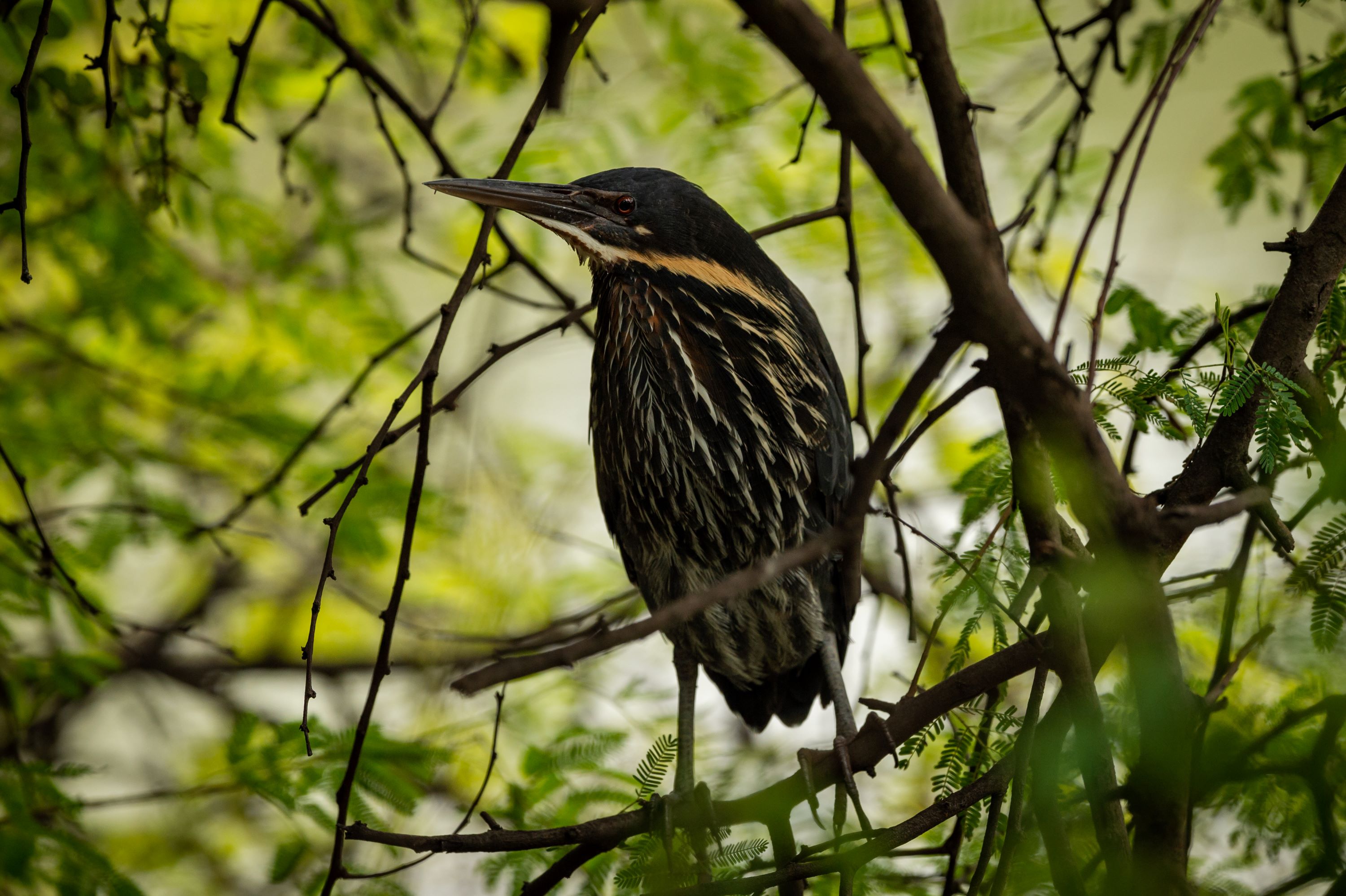
Black Bittern: A Shadowy Specter of the Wetlands
Introduction to the Black Bittern
The Black Bittern, scientifically known as Ixobrychus flavicollis, is a captivating bird belonging to the heron family, Ardeidae. Known for its secretive behavior and strikingly somber plumage, the Black Bittern is a master of camouflage in its wetland habitat, making it a rare and exciting find for birdwatchers.
Physical Description
The Black Bittern is a medium-sized bird, typically measuring between 55 to 65 cm in length. Its plumage is predominantly glossy black or dark brown, offering excellent concealment in the shadowy areas of its habitat. A notable feature is its yellow throat, which stands out against the darker colors of its body. This bittern has a sturdy body, a long neck, and a robust, pointed bill.
Habitat and Distribution
This bittern is primarily found in the tropical regions of South and Southeast Asia, extending to Papua New Guinea and Australia. It inhabits a variety of freshwater wetland environments, including mangrove swamps, marshes, and densely vegetated riverbanks, where it can skulk undetected.
Behavior and Lifestyle
The Black Bittern is a nocturnal bird, most active during twilight and at night. Its behavior is characterized by its elusive and reclusive nature. During the day, it remains hidden in dense vegetation, emerging in the evening to feed.
Feeding Habits
The diet of the Black Bittern consists mainly of fish, amphibians, crustaceans, and aquatic insects. It employs a patient hunting strategy, standing motionless or walking slowly to surprise its prey with a quick, precise strike using its sharp bill.
Breeding and Nesting Habits
The breeding habits of the Black Bittern are not well-documented due to its secretive nature. However, it is believed to nest solitarily in dense vegetation near water. The nest is typically a platform constructed from reeds and grasses.
Egg Laying and Incubation
The female lays a clutch of about 3 to 5 eggs. These eggs are incubated primarily by the female and hatch after an estimated period of 20 to 25 days.
Chick Rearing and Parental Care
Black Bittern chicks are born altricial and rely on their parents for food and protection. The female predominantly undertakes the feeding, with the chicks gradually learning to fend for themselves.
Vocalizations and Communication
The vocalizations of the Black Bittern are not extensively studied, but they are known to make a series of low-pitched calls, particularly during the breeding season. These calls are likely used for communication between mates and signaling territory.
Conservation Status
The Black Bittern is currently listed as Least Concern by the IUCN. However, it faces threats such as habitat destruction and degradation, particularly in the draining and pollution of wetlands. Conservation efforts are needed to protect and manage these critical habitats.
Similar Species and Taxonomy
The Black Bittern is part of the order Pelecaniformes and the family Ardeidae. It belongs to the Ixobrychus genus, which includes several other small bittern species. It shares habitat preferences and behaviors with its Ixobrychus relatives but is distinguishable by its darker plumage and specific regional distribution.
The Black Bittern in Utah
The Black Bittern is not found in Utah or anywhere in North America, as its habitat is restricted to the Australasian and Asian regions. In Utah, enthusiasts can observe other members of the Ardeidae family, such as the American Bittern, in suitable wetland habitats.
Conclusion
The Black Bittern, Ixobrychus flavicollis, is an intriguing and enigmatic bird, embodying the mysterious allure of the wetlands it inhabits. Its nocturnal habits and cryptic plumage make it a challenging yet rewarding bird to observe for those lucky enough to encounter it. The preservation of wetland habitats is crucial for the survival of the Black Bittern and highlights the importance of global efforts in wetland conservation.